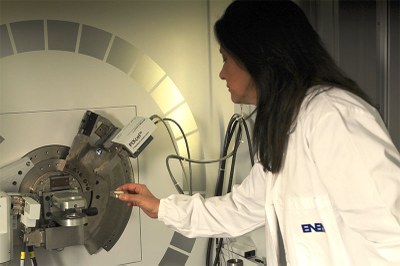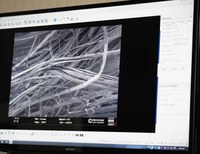Building: Hemp as insulation. Goodbye to stifling heat, and lower-cost air conditioning
21/7/2016
Building sustainable and energy-efficient buildings with lower consumption from air conditioning, particularly in the Mediterranean, warm temperate climate areas. Today this is possible thanks to hemp used as an alternative to traditional insulation used in buildings, as demonstrated by the results obtained under the EFFEDIL project at the ENEA Brindisi Research Centre. The tests on walls ‘stuffed’ with hemp have shown higher energy efficiency compared to brick walls without insulation.
 “This study - says Patrizia Aversa, ENEA researcher –has shown that hemp provides better thermal insulation than bricks, reducing by approximately 30% the heat flow, i.e. the amount of heat passing through a material in a given moment, and by 20% the thermal transmittance, that is how easily heat can pass through a material. Furthermore, hemp has a high level of permeability to water vapour, thus avoiding condensation”.
“This study - says Patrizia Aversa, ENEA researcher –has shown that hemp provides better thermal insulation than bricks, reducing by approximately 30% the heat flow, i.e. the amount of heat passing through a material in a given moment, and by 20% the thermal transmittance, that is how easily heat can pass through a material. Furthermore, hemp has a high level of permeability to water vapour, thus avoiding condensation”.
The EFFEDIL project has also demonstrated that, when treated with anti-mold and water-repellent substances, hemp has better transpiration and resistance to bacteria and reduced fire propagation.
Sustainable buildings and building upgrading could save energy by 50%. In such a context, buildings play a key role as they are responsible for most of the national energy consumption: actually, according to ENEA studies energy consumption in dwellings in Italy is responsible for 45% of CO2 emissions.
 "Thanks to the Effedil project – says Vincenza Luprano, ENEA researcher –today we know that hemp is an excellent material for its thermal insulation potential allowing to get ever sustainable buildings in terms of circular economy, also for its wide availability in the Apulia region and for the environmental impact of the production-use-dismission cycle”.
"Thanks to the Effedil project – says Vincenza Luprano, ENEA researcher –today we know that hemp is an excellent material for its thermal insulation potential allowing to get ever sustainable buildings in terms of circular economy, also for its wide availability in the Apulia region and for the environmental impact of the production-use-dismission cycle”.
Hemp can have countless applications thanks to its versatility and sustainability: from medicine to food, from textile to paper industry. Furthermore, its cultivation does not demand any use of pesticides.
 Hemp cultivation is highly spreading all over Europe and Italy (approximately 3000 hectares, source: Federcanapa): Apulia is the region with the highest hemp production, followed by Piemonte, Veneto and Basilicata. In particular, in Apulia a model of short-production-chain circular economy is being developed, providing for a doubled cultivation and the setting-up of a transformation plant with a yearly capacity of 5 thousand tons.
Hemp cultivation is highly spreading all over Europe and Italy (approximately 3000 hectares, source: Federcanapa): Apulia is the region with the highest hemp production, followed by Piemonte, Veneto and Basilicata. In particular, in Apulia a model of short-production-chain circular economy is being developed, providing for a doubled cultivation and the setting-up of a transformation plant with a yearly capacity of 5 thousand tons.
“Another important goal ENEA is planning to achieve - concludes Vincenza Luprano – is the creation of a network of research institutions, universities, local small- and medium-sized enterprises, and farmers, with a view to increase the number of jobs in Italy and sustainably improve the quality of life”.
For more information:
Vincenza Luprano, ENEA – Functional Materials and Sustainable Application Technologies Laboratory - Territorial and Production Systems Sustainability Department- vincenza.luprano@enea.it
